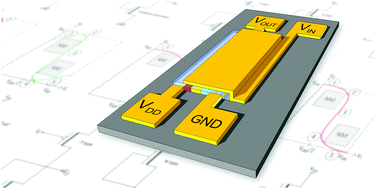Organic-based inverters: basic concepts, materials, novel architectures and applications
Abstract
While organic materials have demonstrated industry-leading performances in a wide array of electronic applications (including OLEDs and OPVs), their use for integration into electronic circuits has been so far limited, in spite of their potential for portable, flexible, light-weight, low-cost applications. However, recent advances in organic (semi)conductors and novel designs in organic field-effect transistors and hybrid systems have reaffirmed the potential of organic logic circuits. This review article provides an overview of organic-based inverter operation and considers all aspects of such circuits including their active layer, processing methods, hybrid organic/inorganic inverters, novel architectures and potential applications.



 Please wait while we load your content...
Please wait while we load your content...